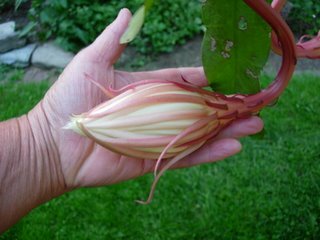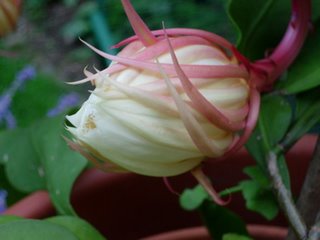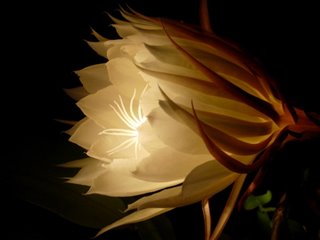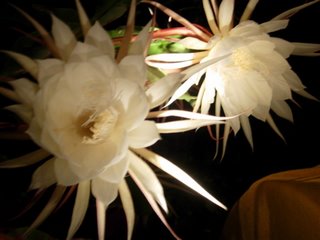Cereus-ly in bloom





The night blooming cereus (epiphyllum oxypetalum) has just finished three glorious nights of bloom, with eight flowers opening on the first night, two the second, and one on the third. A final flower failed in its efforts to fully open the last night. The flowers have a 30-centimeter throat, matching exactly the tongue length of the hawk moth which pollinates the flower in its native climate. We measured the largest flower across its face, from sepal to sepal: eleven inches. The heavenly clove and baby-powder scent emerges from the fat buds just as the petals begin to pull apart, revealing a quarter inch opening pumping out the sweetness. This year, the plant has bloomed a month later than usual, and the process has been slower, with blooms starting to open slightly later in the evening. The last two nights, blooms opened after 9 and were still open at daybreak. Usually they have closed and withered by sunrise.
Last night we observed the plant from the third floor deck of my neighbor, overlooking the linen-draped table where the plant has been displayed. Some neighbors dropped by the yard to admire the plant--something that has been happening all week. Two have given me beautiful photos of the blossoms, one mounted onto a greeting card.






